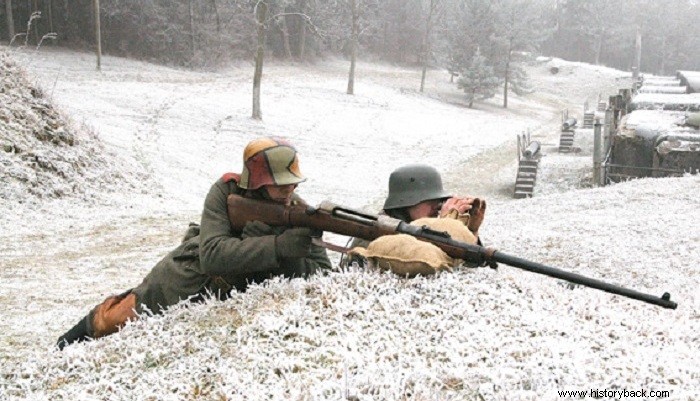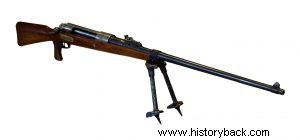
Mauser's Tankgewehr M1918 was the first purpose-built anti-tank weapon in history. It was designed to deal with the tanks of the ANTANT armies which had now become a terrifying threat on the battlefield to the common German infantryman who saw them, defenseless, rolling like an iron wave against him.
The British were the first to use tanks in the final phase of the Somme massacre in 1916. The French followed, producing their own models. Although the first chariots were particularly delicate structures, highly prone to damage, they gradually improved. So a few months after the Battle of the Somme, the Germans were called upon to face the vastly improved British Mk IV tanks with their infantry hopelessly unarmed against them.
The Germans had initially attempted to counter the tanks with a reinforced armor-piercing round fired from the common 7.92mm Mauser infantry rifles. This ammunition, however, proved insufficient against the new British and French tanks. Something stronger was needed.
This was the idea that gave birth to the Tankgewehr M1918, a 13.2mm heavy rifle. specially designed to deal with enemy tanks. The rifle was designed by Mauser based on their common G98 rifle. The company only started manufacturing the T-Gewehr in May 1918 and by the end of the war had produced around 16,000 rifles. But it was too late, the fortunes of the war had now been decided, although the rifle proved to be quite effective.
It was single-shot with a mobile tail system, while it also had a bipod for better stability. It had strong recoil. It was served by a two-man team, a gunner and a feeder. He chambered the 13.2 x 92mm cartridge. hardened steel core with an initial muzzle velocity of 785 meters per second. Each cartridge weighed 51.5 grams.
The weapon is 1,691 meters long and weighs, with the bipod, 18.5 kilograms. It was considered effective at a distance of up to 500 m. It could penetrate vertical steel armor 26 mm thick. at 100 m 23.5 mm. at 200m 21.5mm at 400 m and 18 mm. at 500 m. These performances were more than sufficient against the allied tanks of the time. For example the British Mk IV tank had a maximum armor of 12 mm, the Mk V, 16 mm. while the Whippets had 14 mm armor. The armor of the French tanks was similar, with the exception of that of Saint-Chamond, which had a maximum thickness of 19 mm.

